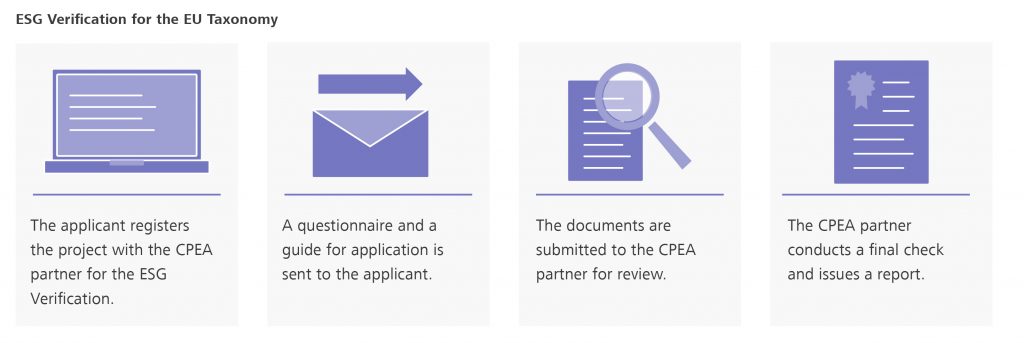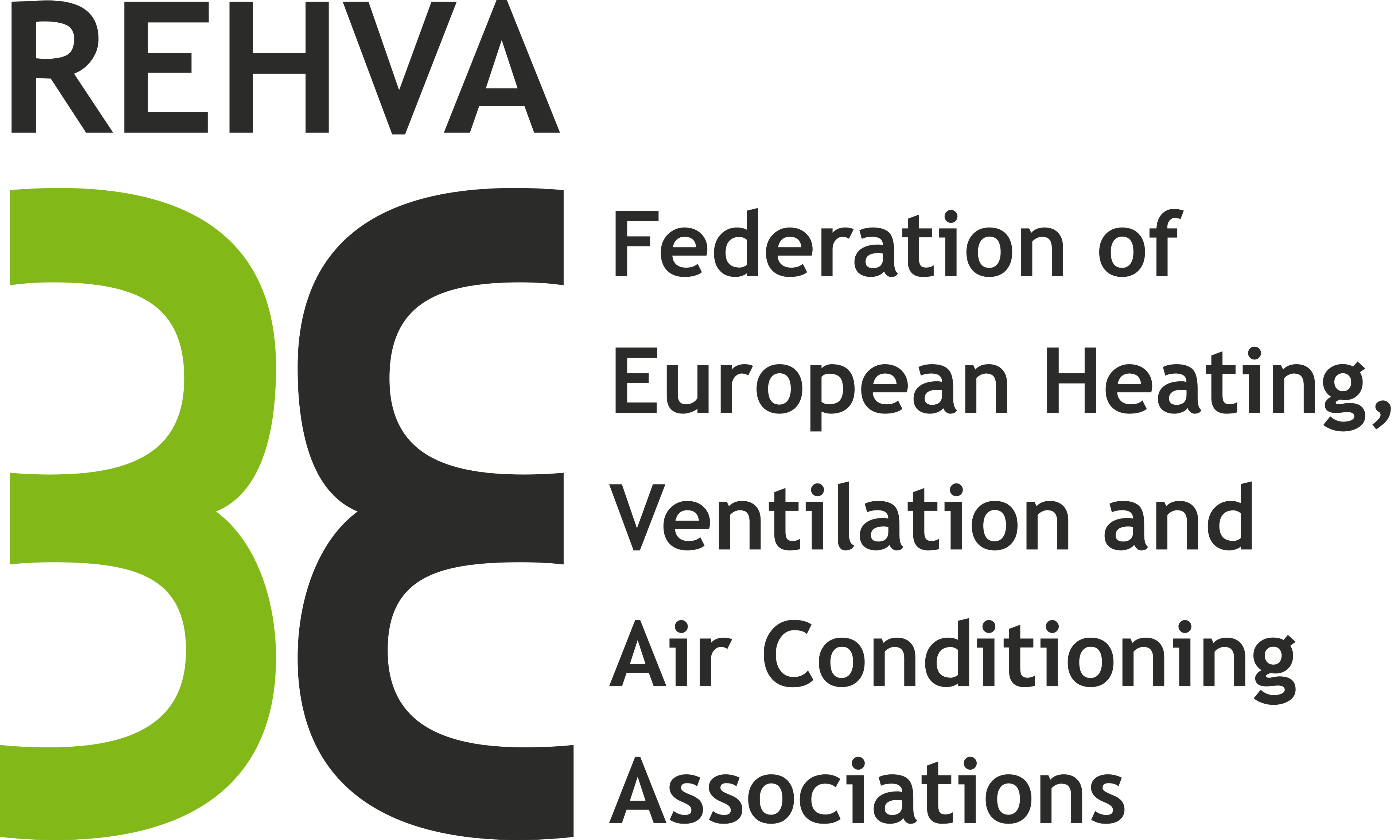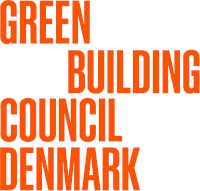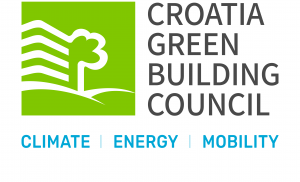ESG Verification for the EU Taxonomy
CPEA offers its own ESG verification service for the real estate industry to make it possible to verify the conformity of property to EU taxonomy criteria. Applicable to three fields of business defined in the taxonomy – new construction, renovation, and acquisition and ownership – it is based on currently applicable taxonomy criteria, although it also includes employment standards, social standards and good governance on the part of involved companies.
The new ESG verification service is offered collaboratively by the CPEA members: The German Sustainble Building Council (DGNB) and the Austrian Sustainable Building Council (ÖGNI). Thereby, it adheres to uniform principles and is applicable throughout Europe.
The new validation and reporting format primarily addresses financial market stakeholders, property developers and the owners of individual properties or entire portfolios. It serves for more transparency and risk minimisation, especially during the buying and selling process. In addition to requiring financial stakeholders to disclose any project investments they are involved in, in future projects that comply with taxonomy criteria are expected to receive better funding terms. In this regard, the new ESG verification offered by CPEA will serve as independent proof of compliance.
Audits can be carried out concurrently or independently during DGNB certification. In the first step, the CPEA service applies to the taxonomy objective relating to climate change mitigation and associated ‘do no significant harm’ criteria, as well as the S and G criteria, which are primarily targeted at companies themselves.
CPEA, through its partners and their member organisations, is the central expert network on sustainable construction in Europe. Through their long-term experience in the field of certification, the partners have long-term experience in the independent verification of the sustainability quality of buildings. CPEA and its partners have a correspondingly high reputation in this area, which is why a verification issued by the DGNB is regarded as a reliable, quality-assured evidence.
Stakeholders using the CPEA service to assess ESG conformity with the EU taxonomy not only receive proof of compliance with the criteria, but also reports capturing the detailed results of assessments, thus providing important pointers on areas that may still require specific improvement.
The questionnaires used in the ESG verification service have already been tested in practice, as they were already used in modified form in the course of an international study on the applicability and marketability of the taxonomy criteria – with consistently positive feedback from the builders, project developers and banks involved in the study.
Additionally, the ESG Verification for the EU Taxonomy represents a genuine European offer for companies from the real estate and financial sectors through cooperation with partner organisations from Spain, Austria, Germany and Denmark. It can be used by projects across Europe. For the audit, it is assigned to the different CPEA partners depending on the project’s location.

The process of the ESG verification
First, a project, several projects or a portfolio are registered via the website of the assigned CPEA partner. The applicant then receives the documents for verification by e-mail. In addition to the questionnaires matching the project, the applicant also receives a guideline describing the exact documentation requirements for the ESG verification. Please note that these requirements will be adjusted promptly in the event of future extensions of the taxonomy criteria by the EU, particularly in the areas of “Social” and “Governance”.
The project-specific documents are submitted by e-mail to the assigned CPEA partner. The corresponding organisation then examines the documents, evaluates the project with regard to the fulfilment of the EU taxonomy criteria and subsequently prepares a report. This is made available to the applicant by e-mail as official proof.
If a project is already registered for DGNB certification at one of CPEA’s partnerorganisations, the process slightly differs. The scope of the documents to be submitted for ESG verification is significantly reduced as the DGNB certification criteria already cover a large number of the requirements of the EU taxonomy that need to be documented.
Register a project with
- the DGNB – Contact: Seema Issar, s.issar@dgnb.de
- the ÖGNI – Contact: Florian Wehrberger, florian.wehrberger@ogni.at
In principle, projects can be submitted by any developer, building owner or occupant – or anyone working on their behalf. After registering projects, applicants receive documentation providing a detailed list of everything that needs to be included in submissions. Basic ESG expertise is sufficient for submissions during the introductory phase in 2021. Depending on how EU taxonomy criteria develop going forward, in future specific qualifications will be required.
The CPEA partners will be offering training on the EU taxonomy and sustainable finance continuously. This will cover essential requirements underlying ESG verification. Advanced courses will offer training on managing requirements in practice and introducing continuous improvements. Training is open to DGNB auditors and consultants and to any other parties interested in this area, even without prior knowledge of the DGNB certification.
In principle, it can be stated that many aspects required in the EU taxonomy are already part of the DGNB certification, whereby synergy effects are achieved in the ESG verification. The international study on the marketability of the EU taxonomy conducted by the CPEA partners also showed that DGNB-certified projects performed significantly better than others. Due to the availability of resilient data, there was less effort involved in processing the verification of the taxonomy criteria.
Conversely, projects that meet the criteria of the EU taxonomy have a very good basis for a successful DGNB certification. In the DGNB System for Buildings in Use, for example, taxonomy-compliant projects already achieve a degree of fulfilment of at least 24 percent. In New Construction, the value is at least 13 percent.
Since the requirements of the EU taxonomy will continue to develop in the coming months and years, they are logically not yet comprehensively reflected in the current DGNB certification criteria catalogues. Until then, there are specific guidelines for the application of the ESG verification for the various DGNB certification systems, in which the additional documentation requirements are described in detail.
In future, the DGNB will include the latest version of the EU criteria in all new and further developments of the DGNB System. This will already be the case for the new Version 2021 of the DGNB System for Renovated Buildings, which will be published shortly. The ESG verification will thus become a standard part of the DGNB certification.








